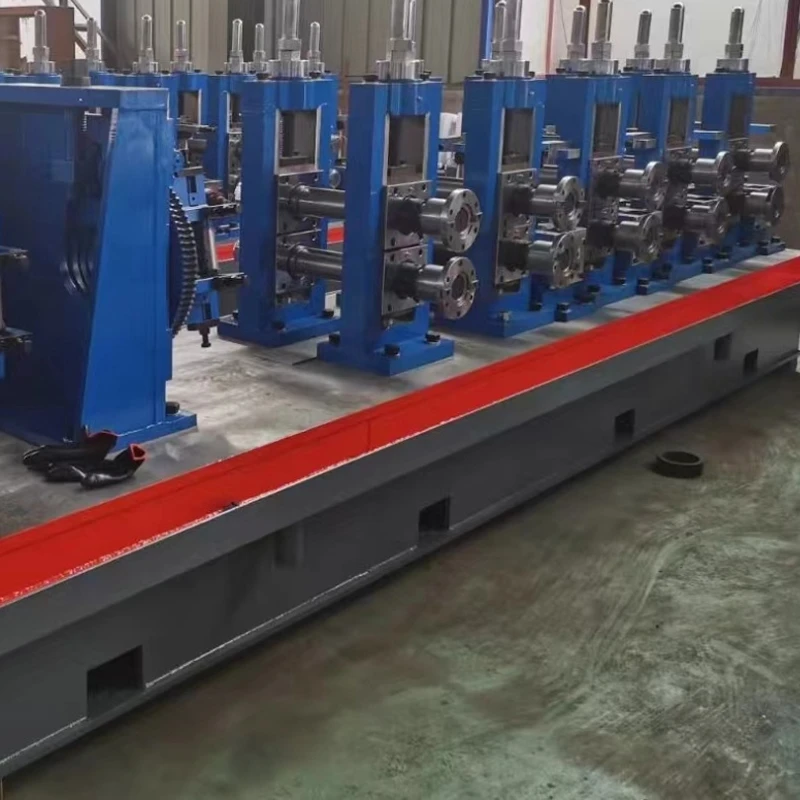flying shear design
Understanding Flying Shear Design in Modern Engineering
Flying shear design is a crucial concept in the field of manufacturing and engineering, particularly in industries that involve the production of continuous materials such as steel, paper, and textiles. This method refers to a cutting process that allows for the precise management of material thickness while ensuring high productivity. In this article, we will explore the principles of flying shear design, its applications, and its benefits in modern manufacturing.
What is Flying Shear Design?
Flying shear design employs a sophisticated mechanism that involves the use of shearing blades to cut materials while they are in motion. This design is especially beneficial in systems where materials are continuous—like rolling mills or extrusion processes. Unlike traditional cutting methods, which require stopping the material to make a cut, flying shear can operate concurrently with the material flow, significantly improving efficiency.
The fundamental mechanism involves synchronizing the speed of the cutting blades with that of the material. When the desired cut length is reached, the blades swiftly move in and execute the cut without interrupting the flow of the material. This technique minimizes waste and optimizes production rates, making it an invaluable addition to manufacturing processes.
Applications of Flying Shear Design
Flying shear design finds its primary application in several industries. In steel manufacturing, for instance, it is used in hot rolling mills to produce cut-to-length steel plates and bars. This precision and speed are vital, as they reduce the overall production time and improve the quality of the final products.
Another significant application is in the paper industry, where continuous rolls of paper are cut into sheets. The flying shear technique allows for rapid adjustments in length according to customer specifications, ensuring flexibility in production runs. Similarly, in the textile industry, flying shear cutting systems are employed to create fabrics of varying lengths efficiently.
flying shear design

Additionally, flying shear design is making inroads in advanced manufacturing technologies, including the production of composite materials and plastics, where maintaining material integrity while cutting is paramount
.Benefits of Flying Shear Design
The benefits of flying shear design are manifold. Firstly, it streamlines the production process by significantly reducing downtime. Traditional cutting processes often necessitate halting the machinery to perform cuts, leading to longer production cycles. By contrast, flying shear design ensures that production continues seamlessly.
Secondly, it enhances product quality. The precision of flying shear systems minimizes the risk of inaccuracies, which can lead to wastage. By achieving cleaner and more precise cuts, manufacturers can maintain tighter tolerances, which is critical in industries where specifications are strict.
Moreover, flying shear systems can be integrated with advanced automation and control systems. This integration allows for real-time monitoring and adjustments, fostering a more responsive production environment. Manufacturers can optimize workflows, adjust speeds, and manage inventory more effectively, leading to higher overall efficiency.
Lastly, flying shear design supports sustainability in manufacturing practices. By reducing material waste and improving energy efficiency, it aligns with the global push towards greener production methods. Manufacturers can produce more with less, contributing to environmental conservation efforts while maintaining profitability.
Conclusion
In conclusion, flying shear design is a transformative approach in manufacturing that enhances productivity, quality, and sustainability. Its ability to perform cuts on-the-fly makes it an essential tool in various industrial applications, from steel production to textiles. As technology advances, we can expect further innovations in flying shear systems, making them even more efficient and integral to modern manufacturing processes. Understanding and implementing flying shear design can lead to significant competitive advantages in an increasingly demanding market landscape.
-
High Frequency Straight Seam Welded Pipe Production Line-BzZhou Xinghua Machinery Equipment Manufacturing Co., LTD.|line pipe steel&welded gas pipeNewsJul.30,2025
-
High Frequency Straight Seam Welded Pipe Production Line-BzZhou Xinghua Machinery Equipment Manufacturing Co., LTD.|High Precision&Automated SolutionsNewsJul.30,2025
-
High Frequency Straight Seam Welded Pipe Production Line - BzZhou Xinghua Machinery Equipment Manufacturing Co., Ltd.NewsJul.30,2025
-
High Frequency Straight Seam Welded Pipe Production Line-BzZhou Xinghua Machinery Equipment Manufacturing Co., LTD.|Precision Welding, High EfficiencyNewsJul.30,2025
-
High Frequency Straight Seam Welded Pipe Production Line|BzZhou Xinghua|Precision Welding&EfficiencyNewsJul.30,2025
-
High Frequency Straight Seam Welded Pipe Production Line - BzZhou Xinghua|Precision Engineering&EfficiencyNewsJul.30,2025


